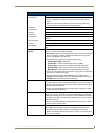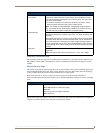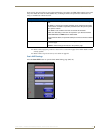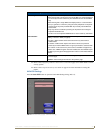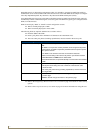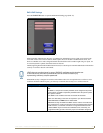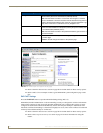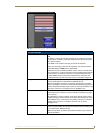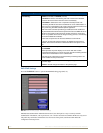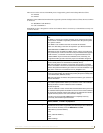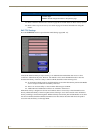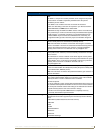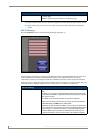
Firmware Pages and Descriptions
97
NXD-700Vi 7" Modero® Wall/Flush Mount Touch Panel with Intercom
EAP-LEAP Settings
Press the EAP-LEAP button to open the EAP-LEAP Settings page (FIG. 72).
EAP (Extensible Authentication Protocol) is an Enterprise authentication protocol that can be used in both
wired and wireless network environments. EAP requires the use of an 802.1x Authentication Server, also
known as a Radius server. The configuration fields described below take variable length strings as inputs. An
on-screen keyboard is opened when these fields are selected.
LEAP (Lightweight Extensible Authentication Protocol) was developed to transmit authentication information
securely in a wireless network environment.
EAP-LEAP security is designed for wireless environments where it is not required to have a client or server
certificate validation scheme in place, yet necessary to transmit data securely over a wireless network.
FIG. 72 Wireless Settings page - EAP-LEAP Settings
LEAP does not use client (panel) or server (RADIUS) certificates and is therefore one
of the least secure EAP security methods but can be utilized successfully by
implementing sufficiently complex passwords.
EAP-LEAP Settings
SSID (Service Set Identifier): Opens an on-screen keyboard to enter the SSID name used on the target
WAP.
The SSID is a unique name used by the WAP, and is assigned to all panels
on that network. An SSID is required by the WAP before the panel is permit-
ted to join the network.
• The SSID is case sensitive and must not exceed 32 characters.
• Make sure this setting is the same for all points in your wireless network.
• NXA-WAP200Gs use AMX as their default SSID.
• With EAP security, the SSID of the WAP must be entered. If it is left blank,
the panel will try to connect to the first access point detected that supports
EAP. However, a successful connection is not guaranteed because the
detected WAP may be connected to a RADIUS server, which may not
support this EAP type and/or have the proper user identities configured.



